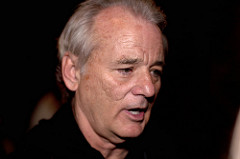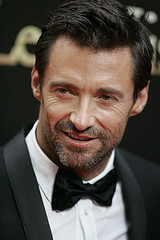Share This Article:
Return to Silver Screen Central Home page


Bill Murray isn’t bearish about The Jungle Book
BDirector Jon Favreau‘s The Jungle Book has two creative fathers: Rudyard Kipling, who wrote the stories on which the movie is based, and Walt Disney, who oversaw production of the 1967 animated version of the children’s classic. In blending these two disparate sources, Favreau and screenwriter Justin Marks opt for thrillingly realistic CGI animals with a touch of Disney’s gentle wit, a mix that’s generally, but not always effective.
The screenplay of the current Jungle Book is closer to the earlier Disney version (this movie was also produced by Disney) than to Kipling’s stories. A young boy, Mowgli (Neel Sethi), has been raised since infancy by wolves, with considerable guidance from the panther Bagheera (voiced by Ben Kingsley). But when Shere Khan (Idris Elba), a vengeful tiger, threatens to kill Mowgli, the boy goes off into the jungle by himself rather than risk the lives of his friends. Eventually, Mowgli returns to confront Shere Khan, hoping to use his human ingenuity and the one thing the tiger fears—fire—to defeat it.
Disney’s earlier Jungle Book was the last of the studio’s classic hand drawn, brightly illustrated films, and the characters, even the villains, were mostly playful and cartoonish rather than dignified or threatening. Favreau’s film, on the other hand, looks startlingly real, as if it were filmed on location in the depths of the rain forest. In actuality, only Sethi and a couple of other bit actors are real, and everything was “filmed” in a Disney animation studio in Los Angeles. The animals are stunningly rendered and usually look, act, and move naturally. When they do act more like the old Disney characters, The Jungle Book suffers. The worst culprit is King Louie the orangutan (Christopher Walken), who, in this version, is a monstrous creature that towers above Mowgli. Shere Khan is the best realized character, a surprisingly sympathetic and credible villain, eloquently voiced by Elba. While The Jungle Book‘s efforts at physical comedy are weak, the script gives Bill Murray, as the voice of Baloo the bear, some good one liners, and the film retains the two classic tunes from the earlier version, “The Bare Necessities” and “I Wanna Be Like You.” Jon Favreau doesn’t quite find the right mix of new technology and old Disney, but he has brought Rudyard Kipling’s stories to exciting, realistic, and at times dangerous life.
Continue reading on The Jungle Book: Mini-review


Recent Comments